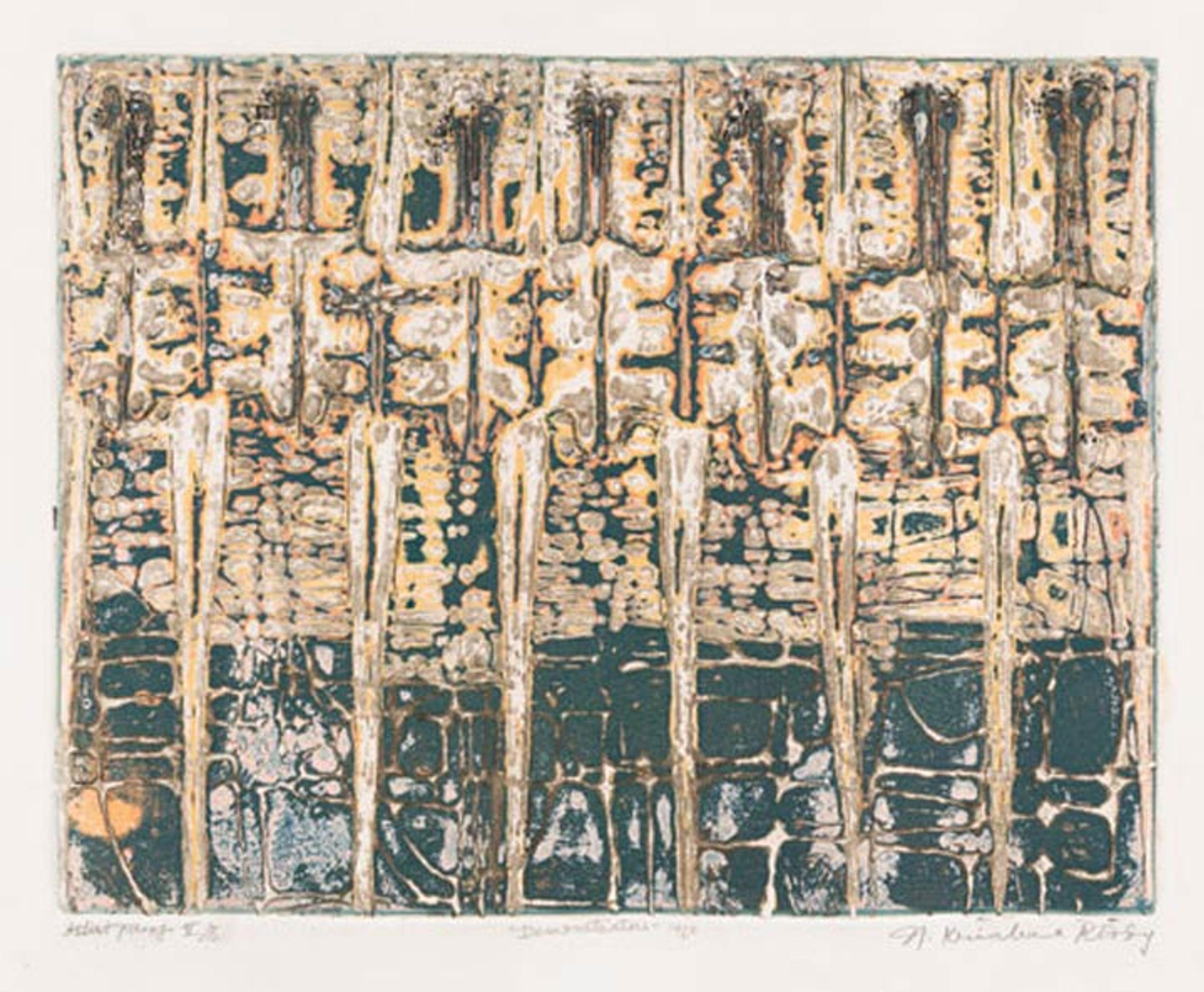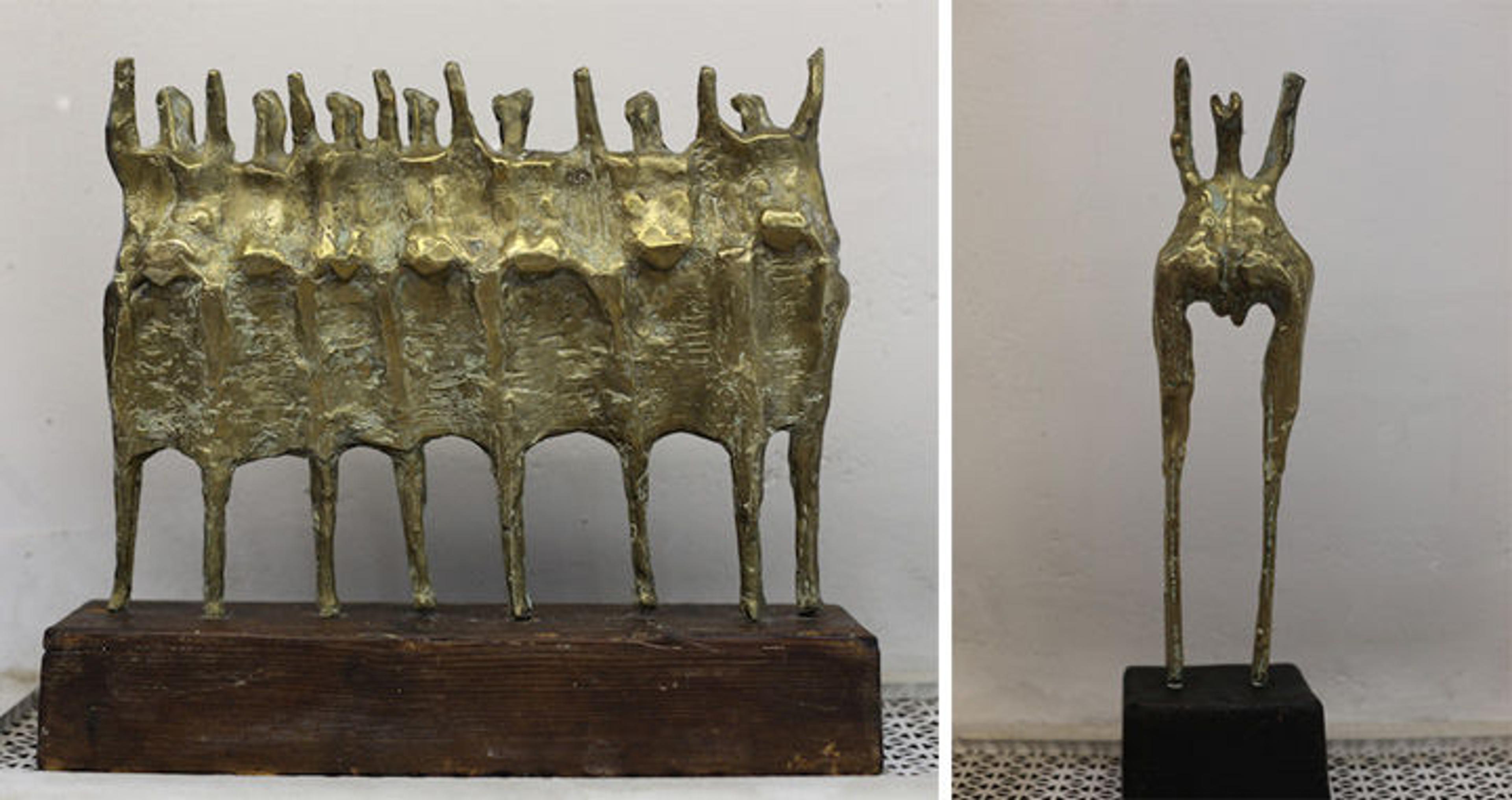Turbulent Times: New Relevance for Krishna Reddy's Demonstrators

Krishna Reddy (American, born India, 1925). Demonstrators, 1968. Mixed color intaglio, 13 3/4 × 17 1/2 in. (34.7 × 44.3 cm) Sheet: 19 3/4 in. × 26 in. (50 × 66 cm). The Metropolitan Museum of Art, New York, Gift of Judith Reddy, 2014 (2014.131.3)
«Created in Paris in 1968, Krishna Reddy's Demonstrators—an ethereal printed image of figures with their hands raised—and Demonstration—two small, roughly textured bronzes—form the artist's response to the turbulent and defining events of his time. Currently on display at The Met in the exhibition Workshop and Legacy: Stanley William Hayter, Krishna Reddy, Zarina Hashmi, these works have become powerfully and dramatically relevant once again. As crowds gather in the streets across the country to protest government actions, Museum visitors find themselves drawn to these works of art in the spirit of the present moment, while also reflecting on the context in which they arose.»
Demonstrators and the two Demonstration sculptures were created in Paris in 1968, a year marked by cultural, social, and political revolutions in many parts of the Western world. In France, civic unrest and demonstrations reached a boiling point in mid-May after the government closed several universities and arrested student occupiers and their supporters. More than 800,000 demonstrators would soon march in Paris alone to express their solidarity with the students and their overall frustration with the government under Charles de Gaulle. These protests spread rapidly throughout France; eventually over 10 million people, a majority of the French workforce, went on strike. More than just a protest against the specific conditions encountered in schools and factories, these demonstrations were a reaction against imperialism, industrial capitalism, and the authoritarianism and bureaucracy of the Gaullist regime.

Left: Krishna Reddy (American, born India, 1925). Untitled / Demonstration (with multiple figures), 1968. Cast bronze, H. 12 in. (30.5 cm), W. 16 1/2 in. (41.9 cm), D. 4 in. (10.2 cm). On loan from the artist. Right: Krishna Reddy (American, born India, 1925). Untitled / Demonstration (with single figure), 1968. Cast bronze, H. 16 in. (40.6 cm), W. 4 in. (10.2 cm), D. 4 in (10.2 cm). On loan from the artist
Reddy witnessed the Paris protests, and today the artist sees echoes of these protests in New York. Born in British India, Reddy experienced the political and popular movements that preceded Indian independence in 1946. Later, he was living in Paris in the 1950s and '60s when France grappled with the brutal legacy of colonialism and the Algerian War.
While many of his works are quasi-abstract compositions inspired by nature, Reddy's early drawings depicted refugees and Bengal famine victims as elongated, emaciated figures. He returned to a similar aesthetic withDemonstrators and Demonstration, which marked a turning point in his oeuvre. These three works recall not only the tumultuous events of 1968, but also the spirit of solidarity among people, depicted by a line of bodies physically united in both print and sculptural form.
Reddy also cast a single sparkling bronze figure in a similar pose that same year—a poignant reminder of the significance of each individual within the larger mass.
Related Links
Workshop and Legacy: Stanley William Hayter, Krishna Reddy, Zarina Hashmi, on view at The Met Fifth Avenue through March 26, 2017
Jennifer Farrell
Jennifer Farrell is a curator in the Department of Drawings and Prints.
Navina Haidar
Navina Najat Haidar is a curator in the Department of Islamic Art.